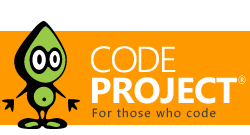|
|
/*********************************************************************
* A LINQ Tutorial: Mapping Tables to Objects
* By: Abby Fichtner, http://www.TheHackerChickBlog.com
* Article URL: http://www.codeproject.com/KB/linq/linqtutorial.aspx
* Licensed under The Code Project Open License (CPOL)
*********************************************************************/
using System;
using System.Collections;
using System.Collections.Generic;
using System.Data.Linq;
using System.Linq;
using System.Windows;
using System.Windows.Documents;
namespace LINQDemo
{
// This file primarily just keeps state and switches the display between books, authors, and catagories
// See the DataTemplates in the xaml for the data bindings which are used to access the objects and their properties
//
// See Also: LinqTutorialSampleQueries.cs (not invoked by default)
// which will simply perform the queries from the tutorial and write their results to the console
public partial class BookCatalogBrowser : Window
{
private BookCatalog Catalog = new BookCatalog( );
private string StatusMessage = null;
private IBookCollection ViewingBooksForAttribute = null;
public BookCatalogBrowser( ) {
InitializeComponent( );
DisplayAllBooks( );
}
private void DisplayAuthors( object sender, RoutedEventArgs e ) {
DisplayAuthors( Catalog.Authors );
}
private void DisplayAuthors( IEnumerable<Author> authors ) {
StatusMessage = "Displaying authors";
DisplayList( from author in authors
orderby author.Name
select author );
AuthorButton.IsEnabled = false;
}
private void DisplayAllBooks( ){
StatusMessage = "Displaying all books";
DisplayBooks( Catalog.Books );
BookButton.IsEnabled = false;
}
private void DisplayBooks( object sender, RoutedEventArgs e ) {
DisplayAllBooks( );
}
private void DisplayBooks( IEnumerable<Book> books ) {
DisplayList( from book in books
orderby book.Title
select book );
}
private void DisplayCategories( object sender, RoutedEventArgs e ) {
DisplayCategories( Catalog.Categories );
}
private void DisplayCategories( IEnumerable<Category> categories ) {
StatusMessage = "Displaying categories";
DisplayList( from category in categories
orderby category.Name
select category );
CategoryButton.IsEnabled = false;
}
private void DisplayList( IEnumerable dataToList){
ResetDisplay( );
Listing.DataContext = dataToList;
}
private void LoadBooksForAttribute( object sender, RoutedEventArgs e ) {
if( sender == null || !( sender is Hyperlink ) ) { return; }
IBookCollection bookHolder = ( ( sender as Hyperlink ).CommandParameter ) as IBookCollection;
if( bookHolder == null ) { return; }
bool alreadyDisplaying = false;
if( bookHolder.Equals( ViewingBooksForAttribute ) ) {
System.Media.SystemSounds.Exclamation.Play( );
alreadyDisplaying = true;
}
StatusMessage = ( alreadyDisplaying ? "Already displaying" : "Displaying" ) + " books for " + bookHolder.Name;
DisplayBooks( bookHolder.Books );
ViewingBooksForAttribute = bookHolder;
e.Handled = true;
}
private void LoadIndividualBook( object sender, RoutedEventArgs e ){
if( sender == null || !( sender is Hyperlink ) ){ return; }
Book book = ( ( sender as Hyperlink ).CommandParameter ) as Book;
if( book == null ){ return; }
StatusMessage = "Displaying book details";
DisplayBooks( new List<Book>( ){ book } );
e.Handled = true;
}
private void ResetDisplay( ) {
ViewingBooksForAttribute = null;
AuthorButton.IsEnabled = true;
BookButton.IsEnabled = true;
CategoryButton.IsEnabled = true;
StatusText.Content = StatusMessage;
}
}
}
|
By viewing downloads associated with this article you agree to the Terms of Service and the article's licence.
If a file you wish to view isn't highlighted, and is a text file (not binary), please
let us know and we'll add colourisation support for it.
Abby Fichtner is a Microsoft Developer Evangelist and author of
The Hacker Chick Blog.
She's been developing custom software applications, wearing every hat imaginable, since 1994. Although, technically, she got her start at the age of 8 when her father brought home an Atari 800. In the evenings, they would sit together and type in the machine code from the Atari magazines – because that was the way serious geeks got their computer games!
Today, she works for Microsoft as a Developer Evangelist to the startup community - helping them to create the next generation of software.




